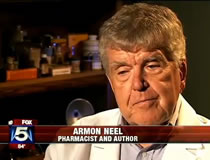September 16th, 2014
Are VTE (Venous Thromboembolism) Prophylaxis Practices in Hospitals Logical?
Are VTE Prophylaxis Practices in Hospitals Logical?
September 14, 20140 Comments
Pharmacologic prophylaxis for venous thromboembolism (VTE) is said to reduce deep vein thrombosis (DVT) and pulmonary emboli (PE), and national quality measures aim to improve VTE prophylaxis delivery to patients. But are the efforts worth it? Not according to the authors of a new study.
Their review of more than 20,000 patients admitted to 35 Michigan hospitals revealed an average of 70% received pharmacologic prophylaxis upon admission. The rate of VTE at 90 days follow-up was extremely low — approximately 1.1% — in patients admitted for general medical care, according to study lead author Dr. Scott Flanders, clinical professor of internal medicine and director of hospital medicine at the University of Michigan Medical School in Ann Arbor. He said only 0.16% of these patients were diagnosed with VTE in the hospital.
Use of pharmacologic prophylaxis upon admission ranged from 85.8% in high-performance hospitals, 72.6% in moderate-performance hospitals, and 55.5% in low-performance hospitals, based on rates of prophylaxis delivery on the first 2 days of hospitalization. Importantly, lower rates of pharmacologic prophylaxis at admission did not significantly lower VTE events. In fact, 73.5% of patients diagnosed with VTE were given pharmacologic prophylaxis upon admission.
Research has touted the effectiveness of pharmacologic prophylaxis in reducing VTE during hospitalization, but many of the trials involved patients in intensive care, surgical patients, or patients with cancer. “Numerous quality improvement efforts have focused on increasing the use of preventative medications to reduce blood clots and subsequent complications among hospitalized patients, but we did not find evidence that these efforts actually reduce risks,” said Dr. Flanders.
He thought hospitals with higher rates of pharmacologic prophylaxis would have lower severity adjusted rates of VTE. They did not. “I find it disturbing that of all the patients who had VTE events within 90 days of hospitalization, over 70% had received all the right medications and measures to prevent those clots in the hospital, yet they developed a clot anyway,” he commented. “So even when we know patients are high risk and give them pharmacologic prophylaxis, they still develop VTE.”
Dr. Flanders said many hospitalized general medical patients are at low risk for VTE and called for a more individualized approach to delivering pharmacologic prophylaxis. “Just giving it to nearly every patient leads to over-prophylaxis,” he explained, “so we need to give it to high-risk patients and avoid its use in lower-risk patients.”
That individualized approach requires reassessment of patients throughout their hospitalizations, said Dr. Flanders, who added, “Some of these patients will have long lengths of stay or will have procedures that change their risk profile, and will therefore require initiation of pharmacologic prophylaxis.”
The article was published online in JAMA Internal Medicine.
Reference:
1. Flanders SA, Greene MT, Grant P, et al. Hospital performance for pharmacologic venous thromboembolism prophylaxis and rate of venous thromboembolism: a cohort study. JAMA Intern Med. 2014 Aug 18.
- October 3rd, 2014
Statin use may be linked to less physical activity in elderly menRead - June 26th, 2015
New Drug Promises Relief from Tinnitus, EpilepsyRead - August 17th, 2014
<strong>Lower Treated BP Tied to Elevated Death Rates</strong>Read - February 12th, 2013
Commonly used painkiller 'should be banned over heart risk'Read - July 5th, 2015
What’s the Safest Way to Administer Testosterone?Read
Geriatric Nutrition
Without good nutrition, positive drug therapy outcomes are very difficult to obtain, For the best in Geriatric Nutritional Information
Find out more Optima SolutionsContinuing Education
Each month we will post an analysis of specific aspects of government long-term healthcare regulations.
Find out more


